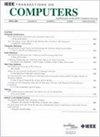多无人机无线网络的轨迹优化与功率分配:基于通信的多智能体深度强化学习方法
IF 3.8
2区 计算机科学
Q2 COMPUTER SCIENCE, HARDWARE & ARCHITECTURE
引用次数: 0
摘要
无人驾驶飞行器(uav)在下一代移动通信系统中发挥着至关重要的作用,在地面基站无法满足覆盖要求时充当空中基站提供服务。然而,协同无人机作为空中基站(uav - abs)的轨迹规划和功率分配面临着能量限制、飞行时间限制、动态环境交互导致的高优化复杂性以及决策信息不足等挑战。针对这些挑战,本文提出了一种多智能体强化学习算法,即通信Actor集中注意力批评算法(CATEN),用于联合优化无人机- abs的飞行轨迹和功率分配策略。该算法旨在最大限度地满足服务质量(QoS)要求的用户数量,同时最大限度地降低无人机- abs的能耗。为了实现这一目标,首先设计了一种信息共享机制,以提高无人机- abs之间的协作效率。利用分布式存储、无人机-无人机交互体验智能调度和门控单元,加强信息筛选和融合。其次,提出了一种多头注意力批评网络,用于捕获不同子空间的无人机- abss之间的相关性。这使得网络能够优先考虑价值信息,减少冗余,并加强uav - abs的协作和决策能力。仿真结果表明,与现有算法相比,CATEN在服务用户数量和能耗方面具有更好的性能,在动态环境中具有良好的鲁棒性和自适应性。本文章由计算机程序翻译,如有差异,请以英文原文为准。
Trajectory Optimization and Power Allocation for Multi-UAV Wireless Networks: A Communication-Based Multi-Agent Deep Reinforcement Learning Approach
Uncrewed Aerial Vehicles (UAVs) play a crucial role in next-generation mobile communication systems, serving as aerial base stations to provide services when ground base stations fail to meet coverage requirements. However, trajectory planning and power allocation for collaborative UAVs as Aerial Base Stations (UAV-ABSs) face several challenges, including energy limitations, flight time constraints, high optimization complexity due to dynamic environment interactions, and insufficient decision-making information. To address these challenges, this paper proposes a multi-agent reinforcement learning algorithm, namely Communication Actor Centralized Attention Critic Algorithm (CATEN), to jointly optimize the flight trajectory and power allocation strategies of UAV-ABSs. The proposed algorithm aims to maximize the number of users meeting Quality of Service (QoS) requirements while minimizing UAV-ABSs energy consumption. To achieve this, firstly, an information sharing mechanism is designed to improve the collaboration efficiency among UAV-ABSs. It leverages distributed storage, intelligent scheduling of UAV-ABSs interaction experiences, and gating units to enhance information screening and fusion. Secondly, a multi-head attention critic network is proposed to capture correlations among UAV-ABSs from different subspaces. This allows the network to prioritize value information, reduce redundancy, and strengthen UAV-ABSs collaboration and decision-making capabilities. Simulation results demonstrate that CATEN achieves better performance in terms of the number of served users and energy consumption compared to existing algorithms, exhibiting good robustness and adaptability in dynamic environments.
求助全文
通过发布文献求助,成功后即可免费获取论文全文。
去求助
来源期刊

IEEE Transactions on Computers
工程技术-工程:电子与电气
CiteScore
6.60
自引率
5.40%
发文量
199
审稿时长
6.0 months
期刊介绍:
The IEEE Transactions on Computers is a monthly publication with a wide distribution to researchers, developers, technical managers, and educators in the computer field. It publishes papers on research in areas of current interest to the readers. These areas include, but are not limited to, the following: a) computer organizations and architectures; b) operating systems, software systems, and communication protocols; c) real-time systems and embedded systems; d) digital devices, computer components, and interconnection networks; e) specification, design, prototyping, and testing methods and tools; f) performance, fault tolerance, reliability, security, and testability; g) case studies and experimental and theoretical evaluations; and h) new and important applications and trends.
 求助内容:
求助内容: 应助结果提醒方式:
应助结果提醒方式:


